Category:Scraping Tools
Top 6 ZenRows Alternatives for Web Scraping in 2025

Lead Software Engineer
Is ZenRows a bit too pricey for your scraping operations?
Or you're not quite getting the success rates you need?
Then, you're in the right place.
Here are 6 alternatives that deliver comparable or better performance without forced parameter combinations or unpredictable pricing spikes.
| API Name | Avg. Success Rate | Avg. Response Time | Starting Price | Avg. Price per 1K Requests |
|---|---|---|---|---|
| ZenRows | 92.64% | 10.0s | $69 | $4.48 |
| Scrape.do | 98.19% | 4.7s | Freemium | $0.80 |
| Bright Data | 98.44% | 10.6s | Pay-as-you-go | $1.50 |
| ScrapingBee | 92.69% | 11.7s | $49 | $3.90 |
| ScraperAPI | 92.70% | 15.7s | $49 | $8.49 |
| ScrapFly | N/A | N/A | $30 | $4.11 |
| ScrapingAnt | 45.45% | 32.7s | $19 | $0.76 |
The table above compares ZenRows with five tested alternatives based on independent benchmark data from best web scraping APIs run across Amazon, Indeed, GitHub, Zillow, Capterra, Google, and X (Twitter). ScrapFly couldn't be tested due to SMS verification requirements.
What ZenRows Does Well
Before we cover alternatives, here's where ZenRows actually delivers value.
Second-Fastest Response Times
ZenRows averaged 10.0 seconds per request in testing, making it the second-fastest provider after Scrape.do.
The speed advantage compounds when scraping large datasets or running time-sensitive operations.
Strong Success Rate on Mainstream Targets
ZenRows hit 92.64% average success rate with perfect performance on several mainstream platforms.
For standard e-commerce and developer platforms, the reliability holds up where it counts.
Downsides of ZenRows
The problems start when you look at pricing transparency and forced parameter combinations.
Forced Parameter Combinations
ZenRows automatically enables both JavaScript rendering and premium proxies on certain domains with no option to disable them.
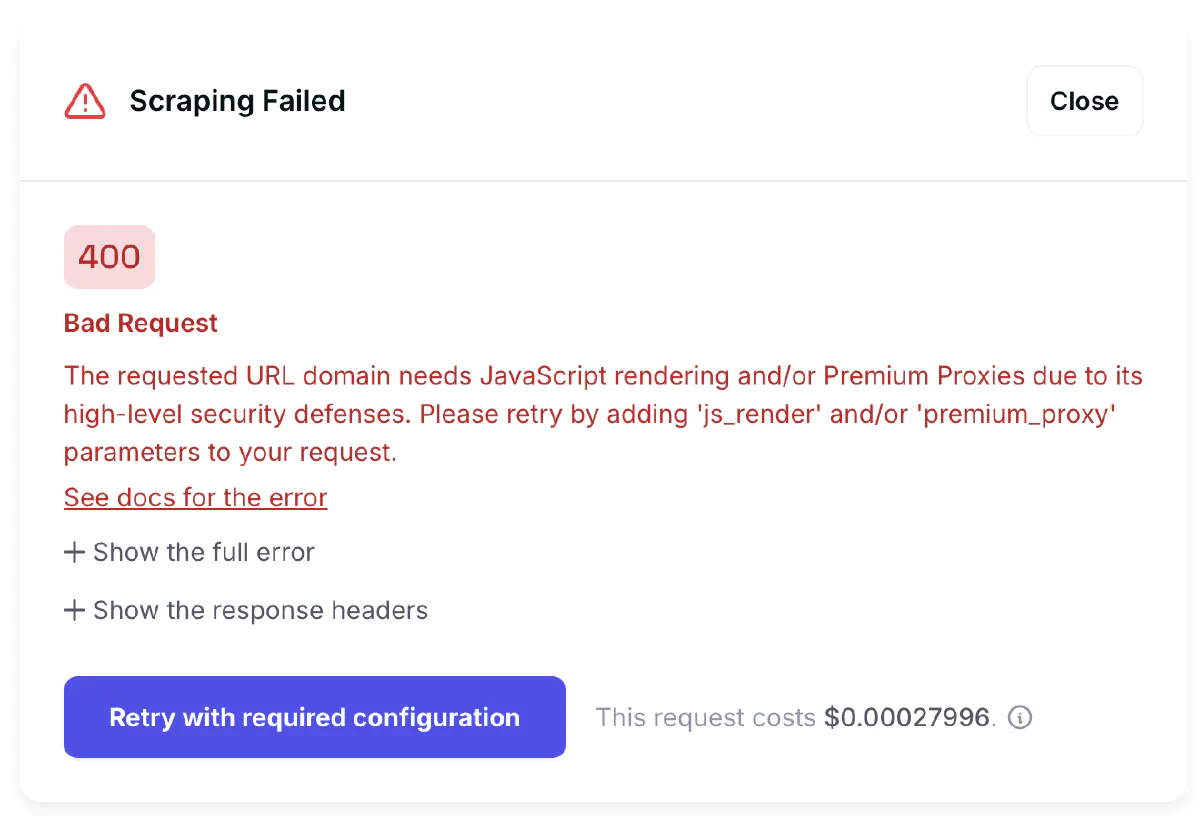
This forces you to spend 25 requests per call instead of 1, even when competitors can scrape the same sites with basic parameters.
There's no way to test cheaper configurations on these domains, eliminating any cost optimization opportunities.
Higher Starting Price
The $69/month Developer plan costs 41% more than most alternatives, but only includes 10K protected results with both rendering and premium proxies enabled.
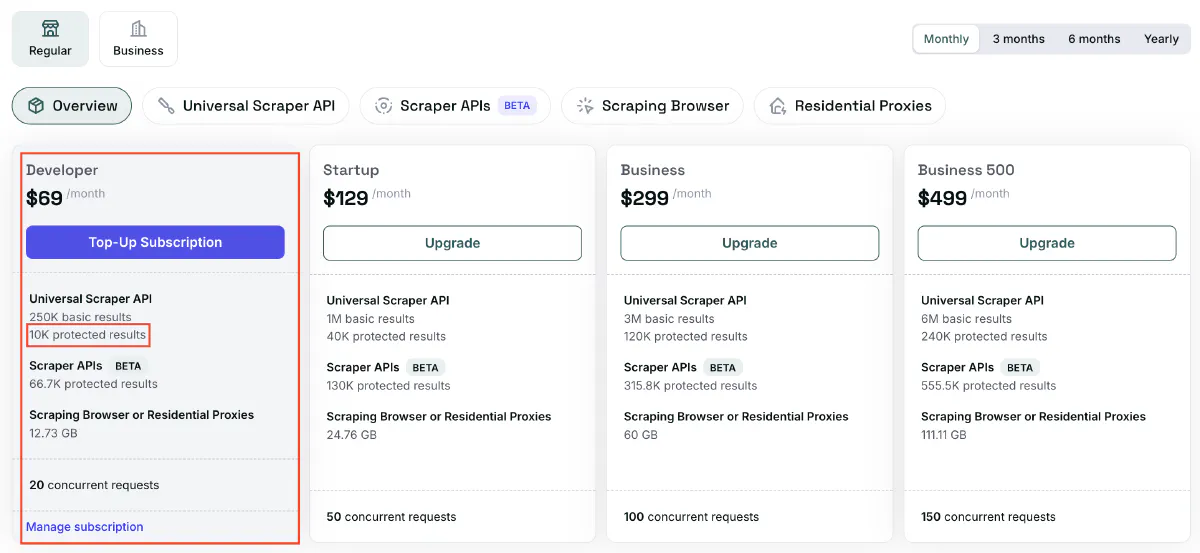
That's enough for testing but not for sustained production scraping.
Most competitors offer 100K-250K requests for $29-$49, making ZenRows expensive for the base allocation.
1. Scrape.do
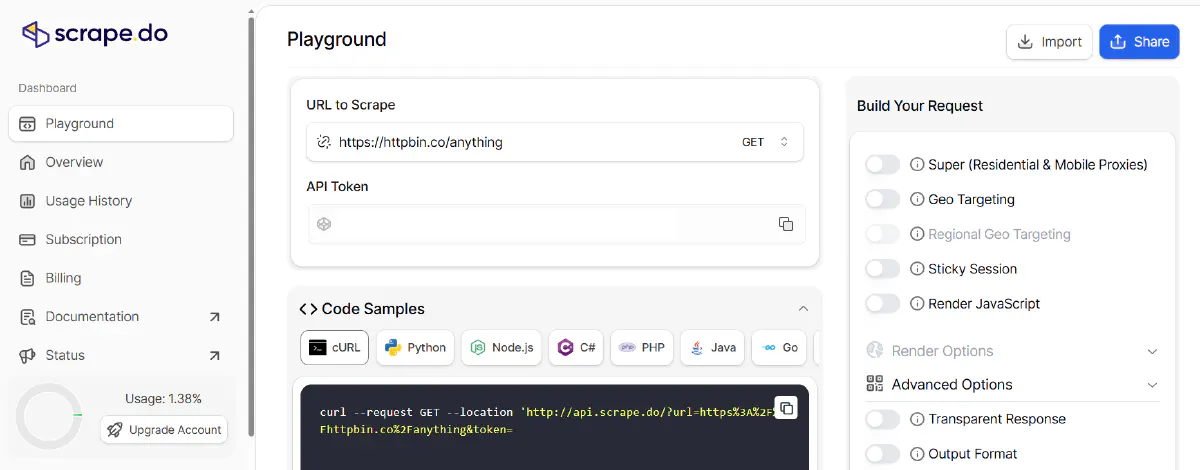
Scrape.do is a scraping API that delivers near-perfect success rates without verification gates or unpredictable pricing spikes.
The platform achieved 98.19% average success rate across seven challenging domains in independent testing, with response times averaging 4.7 seconds. However, Scrape.do doesn't offer dedicated proxy services like ZenRows does.
Pros
- Unmatched speed and reliability: Hit 98.19% success rate and 4.7-second average response time across various domains. That's faster than every tested competitor and more reliable than all but one.
- No forced parameter combinations, transparent pricing: Parameters are disabled by default. You opt in to rendering or premium proxies explicitly, and the credit multiplier applies only when you choose to enable features.
- Freemium plan with 1000 requests monthly for free: Perfect for testing or low-volume projects without time limits.
Cons
- Missing some integrations on AI platforms: No native LangChain or LlamaIndex support yet. You'll need to write custom wrappers if your workflow depends on these tools.
- No dedicated proxy services: Unlike ZenRows, Scrape.do doesn't offer standalone proxy products. You get proxy rotation as part of the scraping service, but can't use proxies independently.
ZenRows vs Scrape.do
Scrape.do is faster and more reliable with transparent pricing and no forced parameter combinations.
ZenRows offers dedicated proxy services that Scrape.do doesn't provide, making it better for teams that need standalone proxy access.
ZenRows has higher starting price but similar forced parameter issues, while Scrape.do delivers better value for pure scraping use cases at at least half. the cost.
Check in-depth comparison of Scrape.do vs ZenRows or start free with Scrape.do and see the difference for yourself.
2. Bright Data
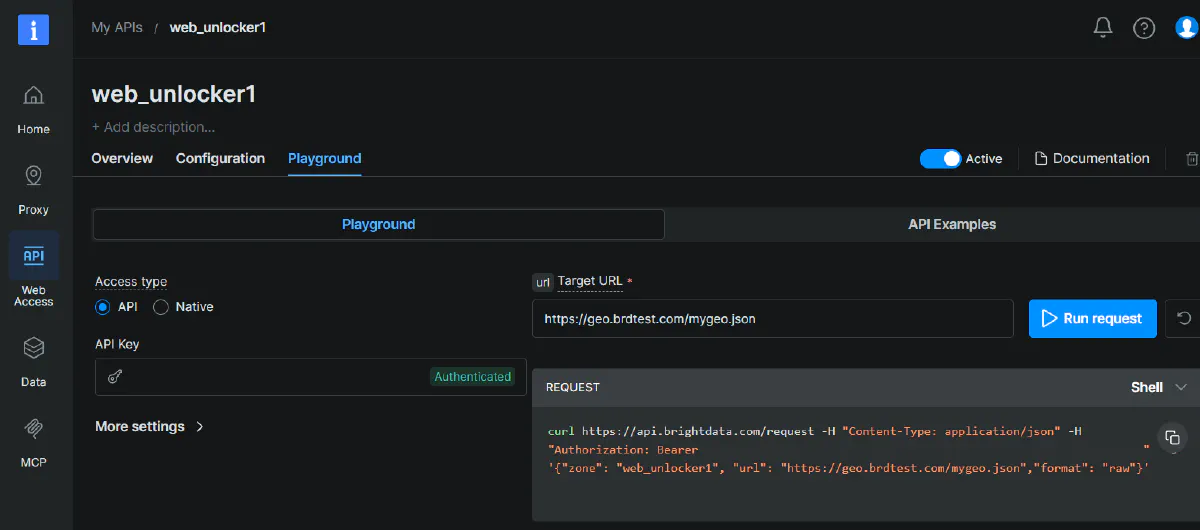
Bright Data is the enterprise standard for web scraping infrastructure, operating over 150 million IPs across 195 countries.
The company offers multiple products beyond basic scraping with automatic parameter selection and complete bypass capability. However, the static pricing model means you pay the same rate regardless of complexity.
Pros
- Best success rate in the industry: Hit 98.44% average success rate, the highest among all providers tested. Even on heavily protected targets, the reliability held up where other providers struggled.
- Static pricing removes guesswork on difficult domains: Premium sites like Walmart or LinkedIn cost a flat $2.50 per 1K requests regardless of complexity. Most competitors either charge unpredictable variable rates or fail entirely on these targets.
- Complete bypass capability: Handled every domain we tested without requiring custom configurations or workarounds. If a site is scrapeable, Bright Data will get through.
Cons
- Static pricing hurts on basic sites: You'll pay $1.50 per 1K requests even for simple pages that competitors scrape for $0.10-$0.20. That's a 10x markup for lightweight operations where the infrastructure overhead isn't necessary.
ZenRows vs Bright Data
Bright Data has higher success rate and more predictable pricing with enterprise-grade infrastructure and static pricing that eliminates cost surprises.
ZenRows offers faster response times but suffers from forced parameter combinations that create similar unpredictability.
Bright Data is better for enterprise with static pricing model, while ZenRows provides more speed but less cost control.
3. ScrapingBee
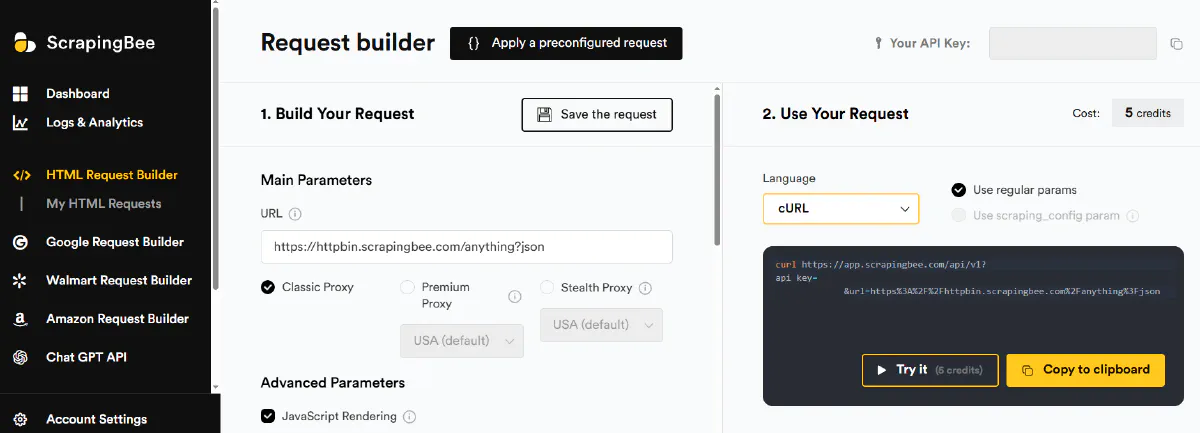
ScrapingBee offers an all-in-one API that manages headless browsers and rotating proxies with an emphasis on ease of use.
The platform includes an AI-powered extraction engine that accepts plain-English instructions and returns structured JSON or CSV output. However, the service struggles with speed and has unpredictable pricing spikes on protected domains.
Pros
- Success rate is solid: Hit 92.69% average success with near-perfect performance on mainstream targets. Works reliably on almost every popular website.
- AI-powered extraction engine: Accepts plain-English instructions like "extract product names and prices" instead of writing custom CSS selectors or XPath expressions. This eliminates manual parsing work for common data extraction patterns.
Cons
- Slower compared to other alternatives: Averaged 11.7 seconds per request, slower than both Scrape.do (4.7s) and ZenRows (10.0s). When speed determines how many pages you can scrape per hour, that difference compounds.
- Base price can spike dramatically: Even though base price is $0.20 for 1K requests, it can go up to $15 for some popular domains due to stealth proxy requirements. This unpredictability makes budget planning difficult.
ZenRows vs ScrapingBee
ScrapingBee has AI extraction capabilities that ZenRows lacks, making it better for teams that want natural language data extraction.
ZenRows offers faster response times and more predictable pricing structure, though both suffer from cost spikes on protected domains.
Both have similar pricing spikes on protected domains, but ScrapingBee's AI features provide unique value for certain use cases.
4. ScraperAPI
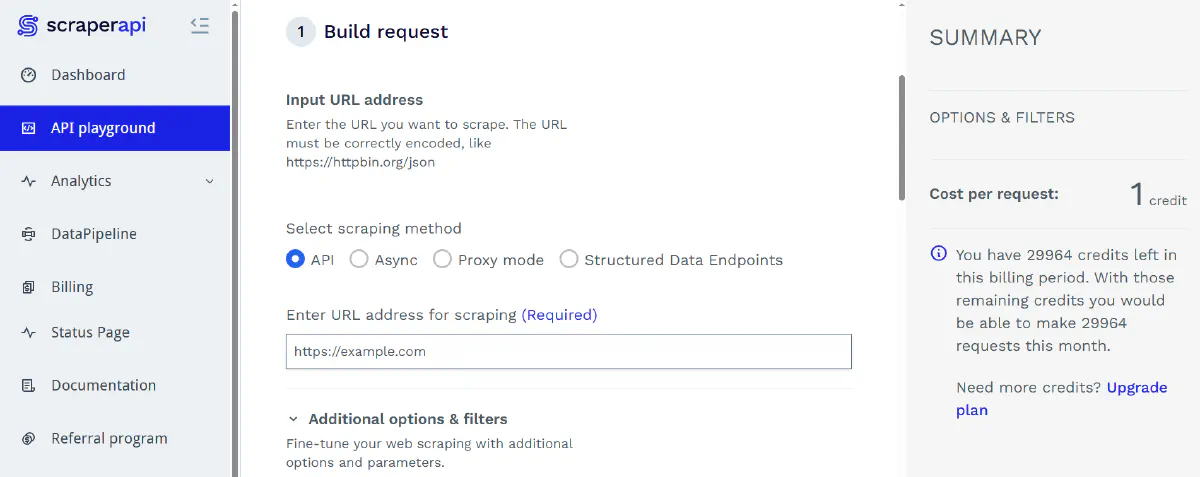
ScraperAPI is a cloud-based scraping platform that focuses on reliability and ease of use, charging per successful request rather than bandwidth.
The service automatically rotates proxies, handles CAPTCHAs, and supports geo-targeting with pre-built templates for common use cases. However, it struggles with speed and has the highest average cost per 1K requests among all providers tested.
Pros
- Good success rate overall: Hit 92.70% average success with strong performance on e-commerce targets. Reliable across most mainstream platforms.
- Pre-built templates for common use cases: Includes ready-made scrapers for SERP, e-commerce, and real estate scraping. These templates handle pagination, rate limiting, and data extraction patterns without requiring you to build from scratch.
Cons
- Slower than ZenRows: Averaged 15.7 seconds per request vs ZenRows' 10.0s. When you're scraping thousands of pages, that 57% speed penalty cuts your throughput significantly.
- Most expensive per 1K: At $8.49 average cost per 1,000 requests, ScraperAPI costs more than every other provider tested. Certain domains can spike to much higher costs, making it prohibitively expensive for protected sites.
ZenRows vs ScraperAPI
ZenRows offers faster response times and better value with 10.0s average response time and $4.48 per 1K vs ScraperAPI's 15.7s and $8.49.
ScraperAPI has pre-built templates that handle common extraction patterns out of the box, while ZenRows requires more manual setup.
Both have similar success rates but different pricing models, with ZenRows providing better speed-to-cost ratio.
5. ScrapFly
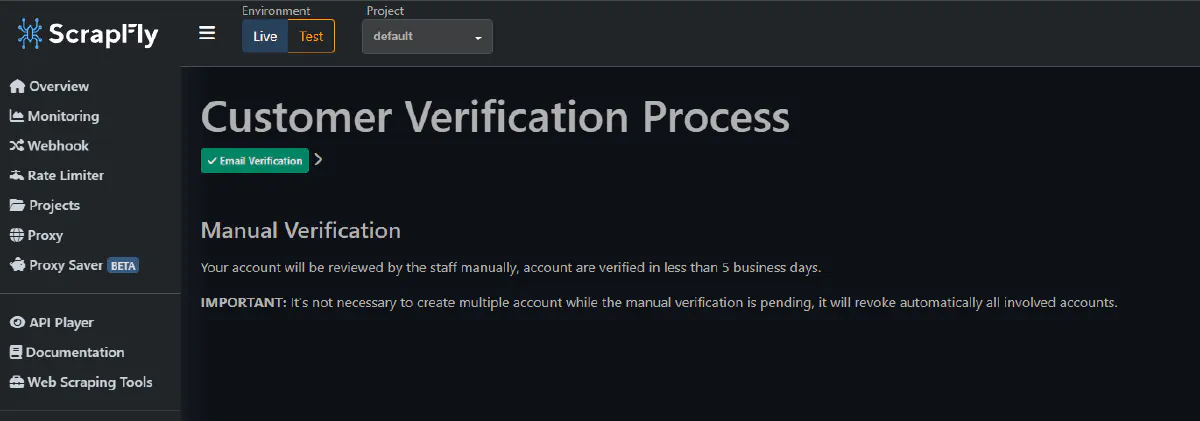
ScrapFly is a developer-focused platform offering three APIs: Web Scraping, Screenshot, and Extraction with AI-driven capabilities.
The service promises 99.99% uptime with battle-tested proxies and includes native integrations with LangChain, LlamaIndex, Zapier, Make, and N8N. However, it requires SMS verification and has similar pricing unpredictability to ZenRows.
Pros
- Lower starting price: At $30, it costs 57% less than ZenRows' $69. Teams with budget constraints can access the platform at a lower entry point, assuming they clear the verification barrier.
- Broader integration ecosystem: Native support for LangChain and LlamaIndex makes ScrapFly attractive for AI-powered scraping workflows. The Zapier, Make, and N8N connections enable no-code automation that ZenRows doesn't support.
- Dedicated Screenshot API: Offers full-page captures, element-specific screenshots, viewport customization, and format conversion. ZenRows provides basic screenshot functionality, but ScrapFly treats it as a first-class product feature.
Cons
- SMS verification required: You can't test the platform without providing a phone number. Multiple user reports mention getting banned without explanation, raising concerns about arbitrary enforcement and service reliability.
- Similar pricing spikes to ZenRows: Averages $4.11 per 1K requests compared to ZenRows' $4.48. Both services hide costs until you start scraping specific domains, making budget forecasting difficult.
- Can't verify performance: Testing was blocked by access restrictions, so the reliability and speed claims can't be validated against the same benchmark conditions used for other providers.
ZenRows vs ScrapFly
ZenRows has no verification barriers and better support since it allows instant testing without phone verification and provides clearer service terms.
ScrapFly offers more integrations and screenshot capabilities with LangChain, LlamaIndex, and dedicated screenshot API that ZenRows lacks.
Both have similar pricing unpredictability, but ScrapFly's broader ecosystem might justify the friction for teams with specific integration needs.
6. ScrapingAnt
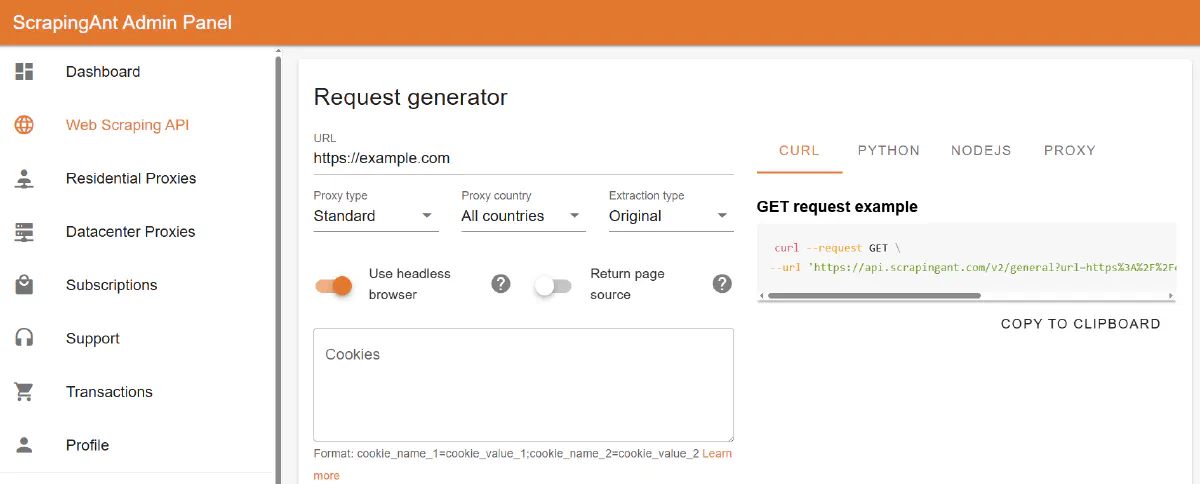
ScrapingAnt offers a credit-based scraping API with rotating proxies and headless browser support at the lowest entry price.
The service provides datacenter proxies by default with optional residential proxies, along with webhook support for asynchronous scraping. However, it suffers from catastrophic reliability issues and extremely slow response times.
Pros
- Cheapest starting price: At $19 for 100K credits, it costs 72% less than ZenRows' $69. For projects with extremely tight budgets or experimental use cases, the low entry point reduces initial commitment.
- Low base cost when it works: On the rare domains where ScrapingAnt succeeds, the cost drops to $0.19 per 1K requests. That's 96% cheaper than ZenRows' base rate.
Cons
- Catastrophic success rate: At 45.45% average success, ScrapingAnt failed on more than half of all requests. ZenRows' 92.64% success rate is literally twice as reliable, making ScrapingAnt unsuitable for any production environment where data completeness matters.
- Slowest response times: Averaged 32.7 seconds per request, the worst speed across all providers. Even when requests succeed, the speed penalty makes large-scale scraping impractical.
ZenRows vs ScrapingAnt
ZenRows is much more reliable and faster with 92.64% success rate and 10.0s response time vs ScrapingAnt's 45.45% and 32.7s.
ScrapingAnt is cheaper but unusable for production work due to catastrophic failure rates.
ZenRows provides better value despite higher price depending on the website, as reliability matters more than cost when requests fail more than half the time.
What to Pick?
- For speed and reliability without pricing traps: Scrape.do delivers 98.19% success at 4.7s average with transparent opt-in parameters and no forced feature costs.
- For enterprise-grade infrastructure with predictable pricing: Bright Data provides the highest success rates (98.44%) with static pricing that eliminates cost surprises.
- For AI-powered extraction capabilities: ScrapingBee offers natural language data extraction that eliminates manual parsing work for common patterns.
- For pre-built templates on mainstream sites: ScraperAPI provides ready-made SERP and e-commerce scrapers that handle common extraction patterns out of the box.
- For broader integrations and screenshot needs: ScrapFly offers LangChain/LlamaIndex support and dedicated screenshot API capabilities, but SMS verification creates barriers.
- Skip entirely: ScrapingAnt's 45.45% success rate makes it unusable for production work regardless of the $19 entry price.
- Overall, Scrape.do is the best alternative to ZenRows. It combines higher success rates (98.19%), faster response times (4.7s), and more transparent pricing ($0.80 avg per 1K) without forced parameter combinations or unpredictable cost spikes.

Lead Software Engineer












